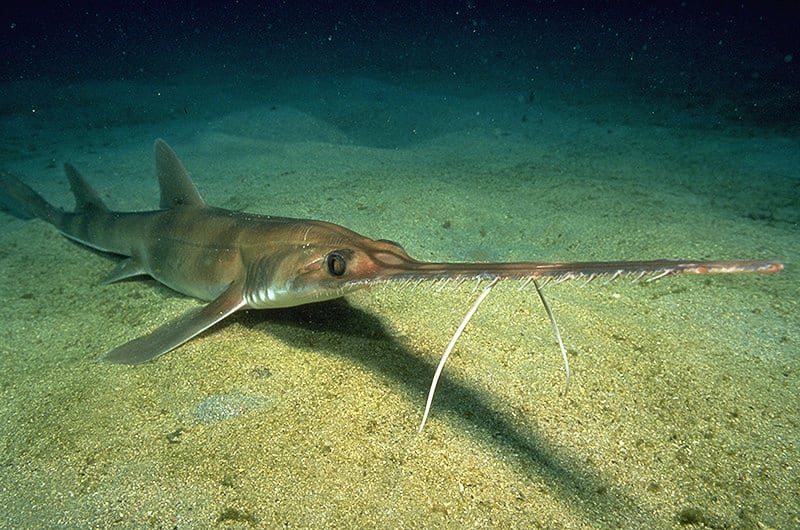Photo © Alexa Elliot
Photo © Alexa Elliot
Photo © Alexa Elliot

Typical species:
Longnose sawshark
Photo © BluePlanetArchive.com
Families:
1
Genera:
2
Species:
10
Sawsharks
Saw sharks (9 species) are a very unusual group that is often confused with sawfishes, which are rays. The most obvious difference between the two is that saw sharks possess barbels and the teeth, located on the prolonged snout, are different sizes. Only five species are known. One species, the sixgil sawshark (Pliotrema warrani), possesses 6 gill slits and lives on the south-easternCape Coast of South Africa.
Not much is known about the general biology of this order.

Typical species:
Longnose sawshark
Photo © BluePlanetArchive.com
Sawsharks
Saw sharks are a very unusual group of sharks with a very long flat snout and lateral sawteeth. The snout resembles a saw with ventral barbels. Saw sharks are often confused with saw fishes, which are rays. Most obvious differences between these two groups are that rays lack barbels, and have their gill slits on the ventral side. Furthermore, saw sharks are of smaller size, compared to saw fishes. The biology of saw sharks is poorly known. Except for the Bahamas sawshark, Pristiophorus schroederi, all of them live on the southern hemisphere. All prefer deeper water and show an aplacental viviparous style of reproduction (ovoviviparity). Of the only 5 species known, one of them, Pliotrema warreni, possesses 6 pairs of gill slits.